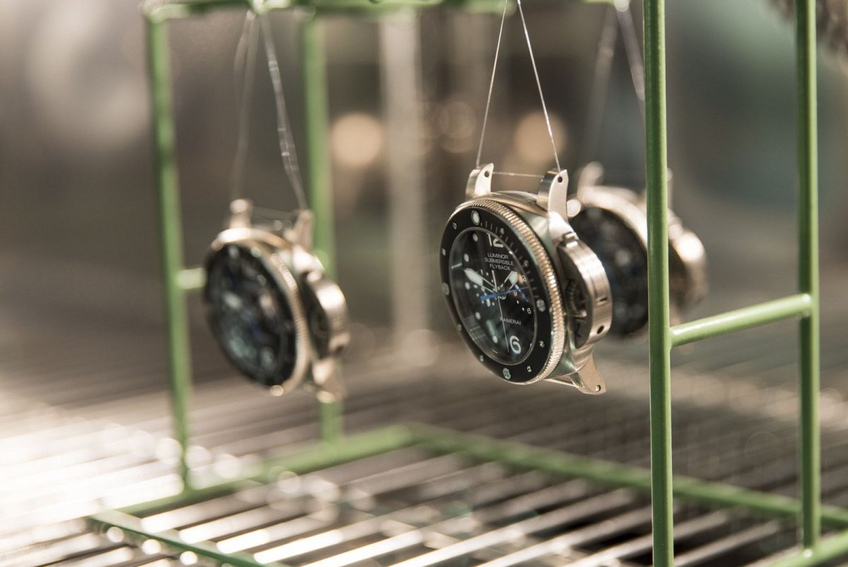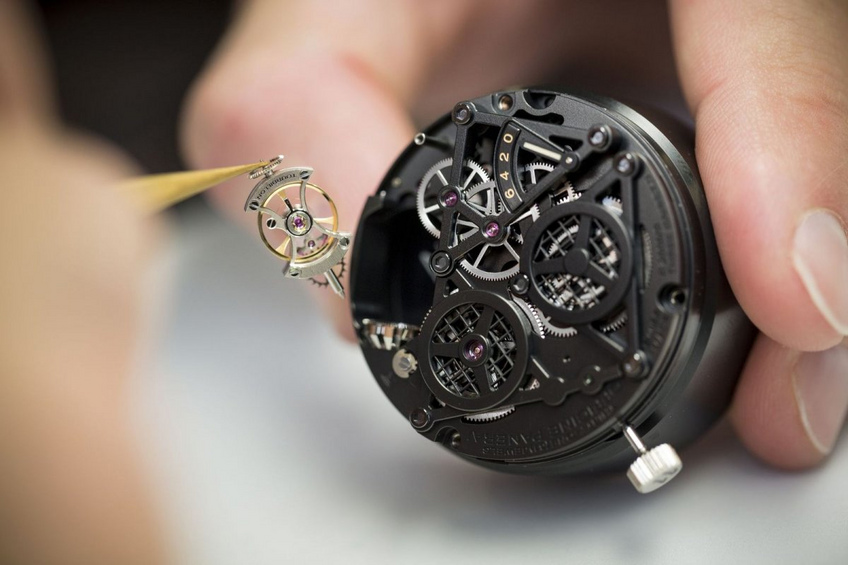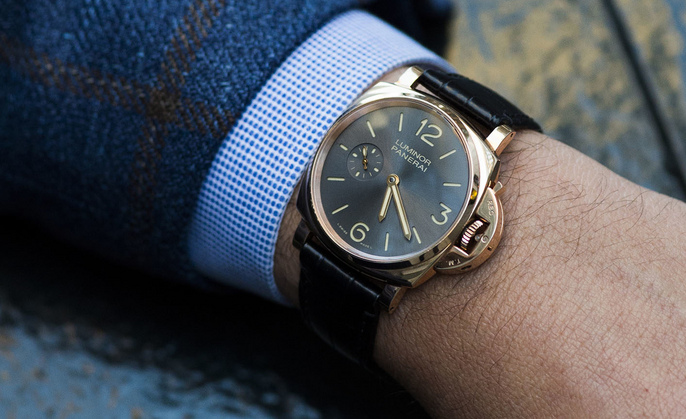

The Panerai Manufactory: Cutting Edge Technology
The new Panerai manufactory in Neuchâtel, which started operating at the end of 2014, just opened its doors for an inaugural visit. It’s quite a find!
The locals know the place, because back when they were children, this piece of real estate overlooking the lake was home to the municipal soccer pitch. Today, it is more densely built-up and is shared by a few dwellings and some specialized factories.
The backdrop
This new building provides over 10,000 square meters (nearly 110,000 square feet) of space. Also, it literally blends into the tree-filled landscape around it, thanks to its very contemporary architecture conceived to have the smallest possible footprint on the environment and thanks to the care given to its outer envelope, which supports the natural energy supply. The waste-disposal system is also state-of-the-art.It is modern and timeless at the same time, a construction all of glass and steel, with a terrace on an upper floor shaded by trees. It integrates perfectly into the surroundings and yet without hiding from the locals, who regularly employ the road to go to the recycling dump.Particular attention was given to two areas in particular: the treatment and management of wastewater, and the energy impact.Careful management of the sunlight supports the building’s lighting. It is backed up by an intricate network of automated LED lights or low-energy bulbs has been set up.But ecological considerations go beyond mere the construction.The employees at the company are also given training to be more sensitive to environmental concerns.Of the 260 employees, for instance, about half use public transportation to come to work.
Square one
Generally, a visit to an integrated manufactory is done according to a very precise plan. It usually begins with a look at the room where the watch cases are pressed and stamped.But here, the itinerary begins in the foyer of the building, whose decoration recalls the more salient features of the brand, and skips the cases altogether. Indeed, the 25,000-28,000 cases needed for the annual production of watches has been given to the specialized company Donzé-Baume.Nor were we made privy to the laser sintering of the new titanium cases using a 3D printer, the new cases presented at the SIHH.It would have been great to see the laminar system that allows extrusion of part of the case, which is emptied of powdered titanium using compressed air and two microscopic holes.
The movement workshop
The beginning of the visit was a little frustrating, because a watch is an entity made up of many parts.To merely view the manufacturing of the cases by watching video material in the room where technical development is performed felt, in a way, incomplete.But the rest of the visit quickly made one forget the little disappointment at the start of the tour. The passage in the room with the servers and the digital commands (the latest version of the most reliable and robust machines) suggests a manufactory concentrated on producing its own calibers in a most impeccable manner.

Since the company does want to make its own quality components, but has no need to do so according to the highest standards, some of the finishing steps are done using robots and automatons (for the brightening of the plates) and automatic or semi-automatic processes (perlage and satin-brushing of the bridges).As often, the “chemistry room,” where rhodium plating or gold-plating is done, was not on the schedule.We then passed directly to the lab that does quality control and metrology, where the calibers are tested for endurance and tweaked for top robustness.
Careful assembly
The person in charge of the pod where the calibers are assembled pointed out that even a simple movement requires between 70 and 95 different manipulations.This work is done here by the 42 workers who have been qualified for the semi-automated work stations of the latest generation that include all the most sophisticated tools.In this area, each person’s task is quite repetitive, but they are allowed to move on throughout the year to ensure that each one learns to perform different operations.This ensures great flexibility in the event of production peaks.It also avoids fatigue, contributes to the internal training of the workers, and, finally, reduces errors that can occur due to repetitiveness of the work.

Once the movements have been assembled, they are transferred to the quality assurance people to make sure they are running properly and accurately.To improve productivity, Panerai has purchased a machine, made exclusively for the company, that can perform the controls on the calibers entirely automatically.This step is followed by more controls, notably two during the assembling process: the first is when the movement has been inserted into the case, and then one more just before the unit is shipped out.
Shipping and back
The assembled watch still has to pass through optical controls before being introduced into a machine to check for water resistance.Having gone through that process, it is given a final identifying code and then put on a bracelet, which is made by the Austrian specialists Hirsch.The finished watches are then given a final check to see that everything is in perfect order, wrapped and shipped out to points of sale around the world.
Of course, some models do come back home for some reason or other.That is when the after-sales service people get into gear.If the problem is minor, the watch can probably be repaired by a watchmaker in the country where it is located.But sometimes, a more complicated movement or a broken part does require the skills of a qualified watchmaker, in which case the watch is sent back to Neuchâtel.So, while touring the manufactory, I did notice some period timepieces equipped with the famous Cortebert caliber (one made for pocket watches by none other than Rolex), a few chronograph calibers made by Minerva (the chronograph series from 2015), and some classic pieces that have suffered some fairly severe accidents. The manufactory makes it a point of honor to meet the needs of its customers in the most efficient manner possible and as fast as possible.
Overall, the factory is quite large, yet it remains at a human scale and is a truly shining example of a workplace.It was built to meet modern manufacturing needs and is optimally designed for the flow of staff and products. The architects made sure that all those working in the building enjoyed a high quality of life.At any rate, that is what it feels like and, to be frank, it's very pleasant.





















